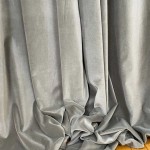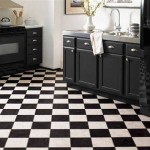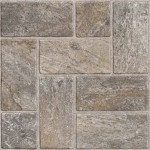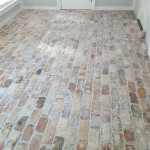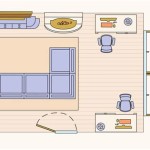White Oak Engineered Hardwood Flooring: The Wide Plank Advantage
White oak engineered hardwood flooring has become a prevalent choice for homeowners and builders seeking a blend of aesthetic appeal, durability, and cost-effectiveness. The wide plank design, in particular, elevates the visual impact of this flooring option, offering a distinct and modern aesthetic. This article delves into the features, benefits, and considerations surrounding white oak engineered hardwood flooring with a wide plank construction.
Engineered hardwood flooring differs significantly from solid hardwood. Instead of being a single piece of wood, it comprises multiple layers bonded together. The top layer, known as the veneer, is a thin slice of real hardwood, in this case, white oak. This veneer is adhered to a core, typically constructed from layers of plywood, high-density fiberboard (HDF), or other composite materials. This multi-layered construction provides enhanced stability compared to solid hardwood, making it less susceptible to warping, cupping, and expansion/contraction due to changes in humidity and temperature.
White oak is a popular hardwood species renowned for its durability, strength, and distinctive grain patterns. It typically exhibits a light to medium brown color with warm undertones, although variations can occur depending on the specific tree and the finishing process. The grain pattern is generally straight, but it can also feature swirling or figured patterns, adding to the natural character of the wood. White oak is also known for its water resistance due to its closed cellular structure, making it a more suitable option for areas prone to moisture exposure compared to other hardwood species like red oak.
Enhanced Aesthetic Appeal with Wide Planks
The wide plank design significantly enhances the aesthetic appeal of white oak engineered hardwood flooring. Traditionally, hardwood flooring consisted of narrow planks, typically ranging from 2 to 4 inches wide. Wide plank flooring, on the other hand, typically features planks that are 5 inches or wider, up to 12 inches or more in some cases. This wider format creates a more expansive and luxurious feel in a room.
The primary advantage of wide planks lies in their ability to showcase the natural beauty of the wood grain. With fewer seams and more visible surface area of each plank, the intricate patterns and textures of the white oak are more prominent. This results in a more visually striking and sophisticated appearance. The reduced number of seams also contributes to a cleaner, more seamless look, enhancing the overall flow and cohesion of the space.
Wide plank flooring can also create the illusion of a larger space. The fewer seams and expansive surface area minimize visual clutter, making a room feel more open and airy. This is particularly beneficial in smaller rooms or those with limited natural light. The elongated lines of the wide planks draw the eye across the room, creating a sense of depth and dimension.
Furthermore, wide plank flooring often exudes a sense of timelessness and historical charm. It evokes the feeling of older, more established homes with original hardwood floors. This can add character and value to a property, particularly if the design style complements the architectural style of the building.
The visual impact of wide plank white oak engineered hardwood flooring can be further enhanced by the finishing process. Options include natural finishes that highlight the natural color and grain of the wood, as well as stained finishes that can alter the color and tone to match specific design preferences. Wire-brushing or hand-scraping techniques can also be applied to add texture and character to the surface of the planks.
Durability and Stability Advantages of Engineered Construction
The engineered construction of this flooring offers significant advantages in terms of durability and stability compared to solid hardwood. Solid hardwood is susceptible to expansion and contraction due to changes in humidity and temperature. This can lead to warping, cupping, and gaps between the planks, particularly in environments with significant fluctuations in moisture levels.
The multi-layered construction of engineered hardwood minimizes these issues. The core layers, typically made of plywood or HDF, are dimensionally stable and resistant to moisture. This prevents the planks from expanding and contracting excessively, maintaining a stable and even surface. This makes engineered hardwood a more suitable option for areas with higher humidity levels, such as basements or kitchens, where solid hardwood may not be appropriate.
The durability of the flooring is also influenced by the thickness of the veneer layer. A thicker veneer can withstand more wear and tear and can be sanded and refinished multiple times, extending the lifespan of the floor. However, a thinner veneer may be more susceptible to scratches and dents and may not be suitable for high-traffic areas.
White oak itself is a naturally durable hardwood, rated highly on the Janka hardness scale. This means it can withstand a significant amount of impact and pressure without denting or scratching easily. When combined with the stability of the engineered construction, white oak engineered hardwood flooring offers a highly durable and long-lasting flooring solution.
The finish applied to the flooring also plays a crucial role in its durability. Polyurethane finishes are commonly used to protect the surface from scratches, stains, and wear. These finishes are available in various sheens, from matte to high gloss, allowing homeowners to customize the appearance of the floor. Regular maintenance, such as sweeping and cleaning with appropriate cleaning products, can further extend the life of the finish and protect the underlying wood.
Installation and Maintenance Considerations
The installation process for white oak engineered hardwood flooring with wide planks is generally simpler and faster compared to solid hardwood. Engineered flooring can be installed using several methods, including floating, gluing, or nailing. The floating method is particularly popular as it does not require the flooring to be directly attached to the subfloor, making it easier to install and less prone to issues related to subfloor movement.
Wide planks can present some specific challenges during installation. Due to their size, they may be more difficult to handle and maneuver, particularly in tight spaces. It is crucial to ensure that the subfloor is level and even before installation, as any irregularities can cause the planks to flex or creak. It is generally recommended to hire a professional installer to ensure proper installation and avoid potential problems.
The maintenance requirements for white oak engineered hardwood flooring are relatively straightforward. Regular sweeping or vacuuming is necessary to remove dirt and debris that can scratch the surface of the floor. Spills should be cleaned up promptly to prevent staining. The floor should be cleaned with a damp mop and a cleaning solution specifically designed for hardwood floors. Avoid using harsh chemicals or abrasive cleaners, as these can damage the finish.
Periodic refinishing may be necessary to restore the appearance of the floor and remove scratches or wear marks. The frequency of refinishing depends on the thickness of the veneer layer and the level of traffic the floor receives. A thicker veneer can be sanded and refinished multiple times, while a thinner veneer may only be able to withstand one or two refinishing cycles. Applying area rugs in high-traffic areas can help to protect the floor and reduce the need for frequent refinishing.
Another important consideration is the acclimation process. Before installation, the flooring should be allowed to acclimate to the environment in which it will be installed. This involves storing the flooring in the room for several days to allow it to adjust to the temperature and humidity levels. This helps to minimize expansion and contraction after installation and prevent issues such as warping or gapping.
In summary, white oak engineered hardwood flooring with wide planks offers a combination of aesthetic appeal, durability, and ease of installation. The wide plank design enhances the natural beauty of the wood grain and creates a more expansive and luxurious feel in a room. The engineered construction provides enhanced stability and moisture resistance compared to solid hardwood. With proper installation and maintenance, this flooring option can provide years of lasting beauty and value.

Grand Width 9 5in White Oak Engineered Hardwood Flooring

White Oak Hardwood Flooring Vermont Wide Plank

Sunset 9 1 2 Wide White Oak Engineered Hardwood Flooring

Wide Plank White Oak Hardwood Flooring Naked

Somerset Wide Plank Collection 7 White Oak Natural Hardwood Flooring Epwwon7e

Carolina

Euro White Oak Wide Plank Engineered Hardwood Flooring

Malibu Wide Plank Solstice French Oak 5 8 In T X 9 4 W Tongue And Groove Wire Brushed Engineered Hardwood Flooring 34 10 Sq Ft Case Hdlcde4879ef The Home

Distressed White Oak Flooring Engineered 9 5 Inch Super Wide Plank

Euro White Oak Wide Plank Engineered Hardwood Floo


